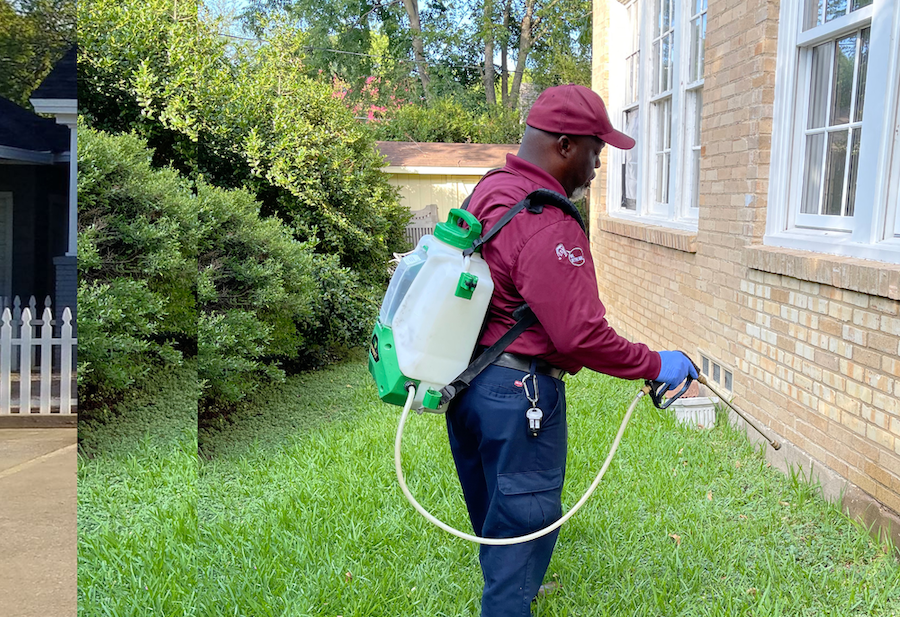A1 Bed Bug Exterminator Charlotte - Effective and Economical Services
A1 Bed Bug Exterminator Charlotte - Effective and Economical Services
Blog Article
Bed Insect Treatment Breakdown: Comparing Chemical Vs. Non-Chemical Solutions
In the world of insect control, especially when dealing with the persistent issue of bed insects, the option in between chemical and non-chemical treatment solutions can be a pivotal one. Both strategies provide unique benefits and drawbacks, influencing variables such as efficiency, security considerations, and overall expense. By analyzing the nuanced information of each technique, a clearer understanding of which path to pursue in attending to a bed insect infestation can be attained.
Effectiveness of Chemical Therapies
Chemical therapies for bed insect problems have been extensively acknowledged for their quick and powerful efficiency in eradicating these bugs. When taking into consideration the efficiency of chemical treatments, it is crucial to understand that they can give a complete and fast remedy to a bed pest problem.
Additionally, chemical therapies have the benefit of providing recurring effects, implying that they can continue to remove bed pests also after the initial application. This residual activity is especially helpful in combating any type of possible re-infestations. Furthermore, the quick action of chemical therapies can bring alleviation to people dealing with extreme bed pest problems, allowing them to restore control of their living rooms swiftly.
Safety Worry About Chemical Solutions
One essential element that calls for careful factor to consider when making use of chemical services for bed insect treatment is making certain the safety of passengers and the environment. Exposure to particular chemicals used in bed bug treatments can lead to respiratory system problems, skin irritability, or various other unfavorable responses, especially in people with pre-existing conditions or sensitivities.
In addition, the ecological influence of chemical services is another considerable factor to consider. Some chemicals utilized in bed pest treatments might be harmful to beneficial pests, wildlife, and ecological communities if they leach into the dirt or water systems. It is necessary to utilize chemical treatments judiciously, following safety guidelines, and thinking about less poisonous alternatives to mitigate these risks and ensure the effective and risk-free administration of bed bug invasions.
Benefits of Non-Chemical Methods
Taking into consideration the possible safety and security worries and ecological impact related to chemical solutions for bed insect treatment, exploring non-chemical techniques offers a promising choice with several distinct benefits. Non-chemical approaches use a safer choice for families, specifically those with individuals, youngsters, or pets conscious extreme chemicals. These approaches get rid of the risks of direct exposure to poisonous compounds, decreasing the possibility for adverse health and wellness impacts. Additionally, non-chemical therapies are eco friendly, as they do not contribute to air or water pollution, making them a lasting option for pest control.
In pest insurance addition, non-chemical solutions can be efficient in targeting bed bugs, including hard-to-reach areas where chemical treatments might not permeate. Approaches such as heat treatment, vacuuming, vapor cleansing, and mattress coverings give thorough eradication without making use of unsafe chemicals. Additionally, non-chemical approaches can be less turbulent, requiring marginal preparation and enabling quicker reentry right into dealt with locations. On the whole, going with non-chemical bed insect therapy methods not only focuses on safety and security and environmental management however additionally makes sure effective and extensive pest control.
Limitations of Non-Chemical Treatments

In addition, non-chemical therapies frequently need numerous applications to achieve successful obliteration. This can be lengthy and might not always assure complete elimination of all bed insects and their eggs, particularly in hidden or hard-to-reach places.
Additionally, the success of non-chemical therapies greatly depends on correct implementation and thoroughness, which can be challenging for look at these guys people without professional experience. Insufficient application of non-chemical methods might result in incomplete elimination, causing persistent invasions and the need for added treatments.
For that reason, while non-chemical treatments have their advantages, it is important to recognize these limitations and consider them when identifying one of the most effective approach for managing bed insect infestations.
Cost Comparison: Chemical Vs. Non-Chemical Options
Offered the constraints connected with non-chemical treatments, a vital facet to assess in the context of bed pest administration is the cost contrast between chemical and non-chemical alternatives. In contrast, non-chemical therapies like heat therapy or steam can be much more costly, with prices varying from $1,000 to $6,000 for an entire home. While the preliminary cost of chemical therapies might seem reduced, several treatments may be needed to completely eliminate the problem, possibly raising the general expense.
Conclusion

Taking into consideration the potential safety and security concerns and ecological influence associated with chemical options for bed insect therapy, exploring non-chemical approaches presents an appealing alternative with a number of distinct benefits.Offered the restrictions linked with non-chemical treatments, an essential facet to assess in the context of bed bug management is the price comparison between chemical and non-chemical choices. In comparison, non-chemical therapies like warmth therapy or steam can be a lot more expensive, with prices ranging from $1,000 to $6,000 for a whole home. While the preliminary price of chemical treatments might seem lower, several therapies might be required to totally remove the problem, potentially raising the general expense.In conclusion, when comparing chemical and non-chemical bed bug pest supplies online therapy choices, it is essential to think about efficiency, security, benefits, limitations, and cost.
Report this page